Chromalox TM-1 Owner's manual
- Category
- Space heaters
- Type
- Owner's manual
This manual is also suitable for

Gasket
Gasket
Cover
Service
Entrance
Plate
Chromalox
®
DIVISION
4
SECTION
TM
SALES
REFERENCE
DATE
SERVICE REFERENCE
Installation, Operation
and
Maintenance Instructions
PD457-2
AUGUST, 2010
(Supersedes PD457-1)
161-306157-001
© 2010 Chromalox Inc.
GENERAL
FIRE/EXPLOSION HAZARD. Do not exceed the
Pressure-Temperature rating of the flange as listed in
ANSI B16.5.
Chromalox TM- Series industrial flanged immersion heaters are
designed for a wide variety of heating applications.
1. Heater Construction Characteristics:
A. High quality resistance wire held in place by compacted
Magnesium Oxide Refractory enclosed in a wide variety of
sheath materials.
B. Low to high watt densities.
C. Standard selection of sheath materials include copper, steel,
INCOLOY
®
alloy and stainless steel. This broad selection of
sheath materials will operate successfully in many corrosive
solutions.
IMPORTANT: It is the responsibility of the purchaser
of the heater to make the ultimate choice of sheath
material based upon their knowledge of the chemical
composition of the corrosive solution, character of the
materials entering the solution, and controls which he
maintains on the process.
FIRE/EXPLOSION HAZARD. Sheath corrosion can
result in a ground fault which, depending upon the
solution being heated, can cause an explosion or fire.
D. Pipe flange sizes in 3, 5, 6, 8, 10, 12 and 14 inches are standard.
Other sizes are also available.
E. Units are available with E1 General Purpose, E4 Moisture
Resistant and E2 Explosion/Moisture-Resistant terminal enclo-
sures.
FIRE HAZARD. An integral thermostat, if provided, is
designed for temperature control service only.
Because the thermostat does not fail safe, it should
not be used for temperature limiting duty. Wiring to
this device is the responsibility of the user.
The system designer is responsible for the safety of
this equipment and should install adequate back-up
controls and safety devices with their electric heat-
ing equipment. Where the consequences of failure
could result in personal injury or property damage,
back-up controls are essential.
"B" Immersion Length
(See Table 1 Below)
Min. Non Heated Length
TM Series Flanged Immersion Heater with
General Purpose (E1) Terminal Enclosure
Moisture Resistant (E4)
Terminal Enclosure
Explosion Resistant & Moisture Resistant (E2)
Terminal Enclosure
Type TM- Series
Industrial Flanged Immersion Heaters
Note: These instructions relate to all enclosure styles shown within.
Note:
Cold ends listed are standard.
However, special cold ends may
be used upon request.
TM Series Flanged Immersion Heater with
General-Purpose (E1) Terminal Enclosure
Flange Size Cold End
3” 4”
4” 4”
5” 4”
6” 4”
8” 6”
10” 6”
12” 6”
14” 6”
Table 1

INSTALLATION
ELECTRIC SHOCK HAZARD. Disconnect all power
before installing or servicing heater. Failure to do so
could result in personal injury or property damage.
Heater must be installed by a qualified person in accor-
dance with the National Electrical Code, NFPA 70.
1. Before installing, unpack and check your TM series immersion
heater for any damage that may have occurred during shipment.
Report any claims to you carrier if damage has ocurred in ship-
ment. Do not operate damaged equipment. Consult
factory for instructions.
2. Check to ensure that the line voltage is the same as that stamped
on the nameplate. Verify wattage and capacity versus the require-
ments at installation site.
3. Do not bend the heating elements. If bending is necessary,
consult factory.
4. IMPORTANT: Mount the heater in the tank so that the liquid
level will always be above the effective heated portion of the
heater. If the heater is not properly submerged, it may overheat and
damage the heating elements (see Figure 1).
FIRE HAZARD. If the heater is not properly sub-
merged, the heating elements will overheat and could
result in a fire or damaged equipment.
5. Where work will pass over or near equipment, additional protec-
tion such as a metal guard may be needed.
6. Heater must not be operated in sludge.
7. The gasket surface must be clean and dry before the heater is seat-
ed (see Figure 2).
8. Closed Tank Installation
Note: When heating in closed vessels, controls and
back-up controls must be used to prevent buildup of temper-
ature and/or pressure.
A. Horizontal Position (Figure 3)
A1. Place heater at an elevation so that natural circulation can
take place.
A2. Position outlet and inlet in a vertical plane, facing upward
to prevent air pockets. Be sure all trapped air is removed from
the closed tank. Bleed the air out of the liquid piping system
and heater enclosure prior to operation.
A3. IMPORTANT: Heater should never be located at the
highest point of the water system. Provide expansion tank
if necessary.
A4. Heaters shall be supported if the immersion length is greater
than 36”.
B. Vertical Position (Figure 4)
9. A drip loop is recommended to minimize passage of moisture
from condensation along wiring into terminal box enclosure and
connections.
FIRE HAZARD. Since heaters are capable of developing
high temperatures, extreme care should be taken to:
A. Use explosion-resistant terminal enclosures in hazardous loca-
tions. See Chromalox catalog for selection of explosion-resis-
tant terminal enclosure for hazardous locations.
B. Avoid contact between heater and combustible materials.
C. Keep combustible materials far enough away to be free of the
effects of high temperatures.
FREEZE HAZARD. This unit may be equipped with a
thermowell for process control or over-temperature
control. Do not allow moisture to accumulate in ther-
mowell. Freezing temperatures can cause damage
that may result in the heated medium leaking into ter-
minal enclosure.
Note: Locate Heater as low as possible for maximum heated liquid storage capac-
ity. Heat does not move downward.
Figure 1 - Open Tank Installation
Expected Low Liquid
Level
This Portion of the Heater Above Liquid Level and
Exposed to Air Will Lead to Premature Failure of Element
Expected Maximum
Sediment Level
Figure 2 - Flanged Mounting
Care must be taken to ensure the heated portion does not extend into the coupling area.
Gasket
Cold End (See Warning)
Element
Tank
Wall
Standard
Pipe Flange
Weld
Locate Drain Pipe at Bottom of Heater,
Sediment Deposits may be
Removed Through Drain Pipe
Maximum Sediment Level.
Install Heater Above
This Level But As
Near to it as Possible for Maximum
Heated Liquid Storage Capacity
Suitable
Wiring
Drip Loop Recommended
to Minimize Passage of Moisture
Along Wiring Into Terminal
Wiring and Connections
Outlet
Inlet
Figure 4 - Closed Tank in Vertical Position
Heater
Outlet
Inlet
Note: In A Forced Circulation System, Use Pump In Inlet Side.
Figure 3 Closed Tank in Horizontal Position
2

WIRING
ELECTRIC SHOCK HAZARD. Disconnect all power
before installing or servicing heater. Failure to do
so could result in personal injury or property dam-
age. Heater must be installed by a qualified person
in accordance with the National Electrical Code,
NFPA 70.
ELECTRIC SHOCK HAZARD. Any installation involving
electric heaters must be performed by a qualified per-
son and must be effectively grounded in accordance
with the National Electrical Code to eliminate shock
hazard.
1. Electric wiring to heater must be installed in accordance with
the National Electrical Code, International Electric code and/or
with local codes by a qualified person.
2. When element wattages are not equal, heaters must not be
connected in series.
3. Electrical wiring to heater should be contained in rigid con-
duit or in sealed flexible conduit to keep corrosive vapors and liq-
uids out of the terminal enclosure. If high humidity is encoun-
tered, the conduit should slope away from the heater.
4. If flexible cord is employed, a watertight connector should be
used for entry of the cord into the terminal enclosure. Outdoor
applications require liquid-tight conduit and connectors.
5. Bring the power line wires through the opening in the terminal box.
6. Heaters are prewired and tagged for easy installation of elec-
trical wiring to the heater. Typical tagging of the individual circuits
of Chromalox TM industrial flanged heaters are shown in the
following tabulation:
Note: Bussing tags are made with a non-conducting material. Please
leave in place for proper identification during wiring.
7. Check for loose terminal connections and tighten if necessary.
Made to order items are prewired and tagged at the factory. Wiring of
made to order items may differ from those shown in the tabulation.
Carefully check voltage and phase on the heater nameplate and
select either the appropriate wiring shown above or check for the
appropriate wiring diagram in the heater terminal enclosure. For
reference purposes, some typical wiring diagrams are shown in the fol-
lowing figures.
8. The current carrying capacity of the power supply leads should
exceed the heater amperage by at least 25%. Be sure to consider
the ambient operating temperature and apply the appropriate cor-
rection factor to the ampacity rating of the wire. Heaters with the
same voltage and wattage may be connected in series for operation
at a higher voltage.
INSTALLATION (cont’d)
THERMOSTATS
10. To prevent moisture accumulation in cryogenic applications
or when heater is exposed to freezing temperatures:
A. Slope conduit away from enclosure (drip loop).
B. Seal all conduit openings to moisture/explosion resistant
terminal enclosure.
C. Insulate terminal enclosure.
D.
Fill thermowell(s) with silicone fluid when heater is
mounted with terminal enclosure up.
BEFORE ENERGIZING
1. Check that the gasket is in place and the flange is securely bolted
to the tank.
2. Check that power supply connections are made according to the
wiring diagram. Also check for positive connection of all bus bars
and power supply leads.
3. Check all bussing hardware is tightened to 20-25 in-lbs.
4. Check all bussing to element connections are tightened to 14-17
in-lbs.
FIRE OR SHOCK HAZARD: Moisture accumulation in
the element refractory material, element over-tem-
perature, or sheath corrosion can cause ground fault
to the element sheath, generating arcing and molten
metal. Install Ground Fault Circuit-Interrupter (GFCI)
to prevent personal injury or Equipment Ground Fault
Protection to prevent property damage.
1. Integrally mounted thermostats are available: single throw models.
2. Electrical rating of thermostats:
3. Thermostats may be connected directly to heaters that are rated
within the electrical capacities specified. When the heater phase or
amperage exceeds the contact rating of the thermostat, the heater
should be controlled by a magnetic contactor with the thermostat
wired for pilot duty. Refer to the thermostat instruction sheet
packed with the heater.
4.
If optional thermostat kit is purchased, please refer to instruction
manual shipped with kit for proper bracket and thermostat mounting
5. WARNING: To maintain third party listing on an E4 housing, do
not add any sparking device, such as a thermostat, inside the termi-
nal enclosure.
Thermostat Type
Voltage T1 T2
120 30 Amps 30 Amps
240 30 Amps 30 Amps
480 Pilot Duty Pilot Duty
3
No. Circuits Phase Tagging
1 1 L1 & L2
1 3 L1, L2 & L3
2 3
AL1, AL2, AL3
BL1, BL2 BL3
3 3
AL1, AL2, & AL3
BL1, BL2 & BL3
CL1, CL2 & CL3

TM Series - 27 Element (All sheath materials) TM Series - 36 Element (All sheath materials) 208-600V
TM Series - 12 Element (All sheath materials)
TM Series - 6 Element (All sheath materials)
COMMON WIRING DIAGRAMS*
TM Series - 3 Element (All sheath materials)
L1
3 ELEMENT 1 CIRCUIT, 1 PHASE
SEE HEATER NAMEPLATE FOR VOLTAGE
L2
L2
3 ELEMENT 1 CIRCUIT, 3 PHASE
SEE HEATER NAMEPLATE FOR VOLTAGE
L1
L3
6 ELEMENT 2 CIRCUIT, 3 PHASE
SEE HEATER NAMEPLATE FOR VOLTAGE
AL2
BL1
BL3
BL2
AL1
AL3
6 ELEMENT 1 CIRCUIT, 3 PHASE
SEE HEATER NAMEPLATE FOR VOLTAGE
L2
L1
L3
TM Series - 18 Element (All sheath materials)
12 ELEMENT 2 CIRCUIT, 3 PHASE
SEE HEATER NAMEPLATE FOR VOLTAGE
AL1
AL2
AL3
BL1
BL2
BL3
L1
L2
L3
12 ELEMENT 1 CIRCUIT, 3 PHASE
SEE HEATER NAMEPLATE FOR VOLTAGE
18 ELEMENT 3 CIRCUIT, 3 PHASE
SEE HEATER NAMEPLATE FOR VOLTAGE
BL1
AL3
AL1
AL2
BL2
BL3
CL2
CL3
CL1
TM Series - 45 Element (All sheath materials)
AL1
27 ELEMENT
3 CIRCUIT, 3 PHASE
SEE HEATER NAMEPLATE
FOR VOLTAGE
AL2
AL3
CL1
CL2
CL3
BL2
BL3
BL1
36 ELEMENT
3 CIRCUIT, 3 PHASE
SEE HEATER NAMEPLATE
FOR VOLTAGE
CL3
BL2
BL1
AL1
AL3
AL2
CL2
CL1
BL3
4
45 ELEMENT
3 CIRCUIT, 3 PHASE
SEE HEATER NAMEPLATE
FOR VOLTAGE
CL3
AL1
AL3
AL2
CL1
CL2
BL2
BL1
BL3
*For other wiring configurations, please refer to unit drawing.

WIRING INSTALLATION
Wiring
Use only Type E4 or E2 terminal enclosures in hazardous location
environments as applicable. The proper use of Type E4 or E2 ter-
minal enclosures on electric heaters located in hazardous areas
requires that all electrical wiring comply with National Electrical
Code (NEC) and/or International Electric Code requirements for
hazardous locations.
Wiring Entrance Locations
Flange sizes 6" or larger that use Chromalox E1 or E4 offer several
convenient options for conduit wiring & location. The housing is
equipped with two removable service entrance plates for installation
of wiring. Any or all of the six sides can be used for wiring locations.
Refer to exploded view drawing. The housing can also be rotated (by
removal from flange) to allow for more position possibilities. To
install service entrance holes, simply remove the side Allen screws
and use the centering depression to drill the appropriate size hole.
Reinstall the gasket(s), if applicable, and service entrance plates by
tightening the Allen head screws to 4-5 in-lbs. The 'Octobox' style of
housing can be removed for ease of access to element bussing or to
better locate the power conduit(s) entry point. To accomplish, sim-
ply remove the Allen-head screws on the outside of the housing.
When reinstalling, be sure to properly align gasket, if applicable, and
tighten to 40-50 in-lbs.
Tip for reinstalling gaskets
Place Allen Head screws through metal covers and gentle push gas-
ket hole over the threaded screw. This will allow the gasket to stay
in place while tightening the cover.
Maximum Temperatures
Safe operation in a hazardous location requires the maximum oper-
ating temperatures of all exposed surfaces of the heater including
temperatures on the outside of the vessel, piping, flanges, screw
plugs, enclosures and other heat conducting parts be limited. The
flammable liquids, vapors or gases present determine the maximum
surface temperature permitted in any hazardous location. The end
user or purchaser of the electric heating equipment is responsible for
determining the proper classification of an area and for providing
Chromalox with hazardous area specifications and requirements for
proper equipment design. (NEC and IEC provide guidelines for
evaluating and classifying hazardous locations.)
Safety Devices
Approved pressure and/or temperature limiting controls must be
used on electric heaters and heating elements to ensure safe opera-
tion in the event of system malfunctions.
Note: Locations including hydrogen gas require additional conduit
seals and thread engagement.
5
North American Canadian European International
Model Purpose Designation (s) Designation (s) Designation (s) Designation (s)
E1 General Purpose Generic NEMA 1, NEC NEMA 1 IP32 IP32
Agency (s) UL/CSAus CSA CE: Manufacturer’s Declaration CE: Manufacturer’s Declaration
Ratings General Duty Only General Duty Only General Duty Only General Duty Only
E4* Moisture Resistant Generic NEMA 4 NEMA 4 IP66 IP66
Agency (s) UL / CSAus CSA CE: Manufacturer’s Declaration CE: Manufacturer’s Declaration
Ratings Class I Div. 2, Groups B, C, D Class I Div. 2, Groups B, C, D II 3 G Ex nA II T1 to T6 Ex nA II T1 to T6
Class II Division 2, Class II Division 2,
Groups E, F: 200˚C (T3) Groups E, F: 200˚C (T3)
Group G 165˚C (T3B) Group G 165˚C (T3B)
Class I Zone 2 AEx nA II Class I Zone 2 Ex nA II T1 to T6
T1 to T6
E2 Moisture/Explosion Generic Explosion Resistant Explosion Resistant Explosion Resistant Explosion Resistant
Resistant Agency (s) CSAus CSA ATEX IECex
Ratings Class I, Div. 1 Groups B,C & D Class I, Div. 1 Groups B,C &D II 2 G EEx d IIB+H2 T1 to T6 Ex d IIB+H2 T1 to T6
Class II, Div. 1 Groups E, F & G Class II, Div. 1 Groups E, F & G
Class I Zone 1 Class I Zone 1
AEx d IIB + H2 T1 to T6 Ex d IIB + H2 T1 to T6
E5 Moisture/Explosion Generic ITS IECex
Resistant Agency (s) ATEX Ex de IIC T1 to T6 540˚C, 600˚C
Ratings II 2 G EEx de IIC T1 to T6,
540˚C, 600˚C
*WARNING: Addition of a sparking device, such as a Thermostat, to an E4 housing will annul hazardous area rating.
Note: Temps over T3
(200˚C) require stand-
offs for third party list-
ing. Refer to IECex &
ATEX certifs. for stand-
off dimensions
Note: Temps over T4
(135˚C) require stand-
offs for third party list-
ing. Refer to IECex &
ATEX certifs. for stand-
off dimensions
Flange ATEX IIC
Size Labeling Reference
3" - 8" CFP4
8" - 12" CFP8
12" - 18" CFP12
Terminal Housing, Exploded View - ‘Octobox’ Style
Third Party Certifications by Housing Style

ENCLOSURE STYLES
3-3/4"
1-1/2"
5
1" CONDUIT OUTLET
3-1/2"
6-3/4"
CONDUIT
HUB
10-3/8
263
Removable
Service Entrance
Plate
Dimple for locating
chassis punched
conduit opening(s)
Note: These are typical enclosure styles. The heater purchased may vary slightly.
3-3/4"
1-1/2"
5
1" CONDUIT OUTLET
E1 GENERAL PURPOSE ENCLOSURE FOR UP TO 5" FLANGE
E2 EXPLOSION RESISTANT ENCLOSURE
FOR UP TO 5" FLANGE
E4 MOISTURE RESISTANT ENCLOSURE
WITH GASKET UP TO 5" FLANGE
10-1/2"
267
Removable
Service Entrance
Plate
Dimple for locating
chassis punched
conduit opening(s)
E4 MOISTURE RESISTANT ENCLOSURE
WITH GASKET 6" AND LARGER FLANGE
E1 GENERAL PURPOSE ENCLOSURE FOR
6" AND LARGER FLANGE
E2 EXPLOSION RESISTANT ENCLOSURE FOR
6" AND LARGER FLANGE
6

MAINTENANCE
ELECTRIC SHOCK HAZARD. Disconnect all power
before installing or servicing heater. Failure to do so
could result in personal injury or property damage.
1. Heaters should be checked regularly for coatings and corro-
sion and cleaned if necessary.
2. The tank should be checked regularly for sediment around
the heater as sediment can act as an insulator and shorten heater
life.
Note: User is responsible for maintenance schedule based on
their knowledge of the heated medium and operating conditions.
3. Remove any accumulated sludge deposits from heater and
from tank.
4. Check for loose terminal connections and tighten if necessary.
5. If corrosion is indicated in the terminal enclosure, check terminal
enclosure gasket and replace if necessary. Check conduit layout
to correct conditions that allow moisture to enter the terminal
enclosure.
6. Clean terminal ends of all contamination.
7. The heater can be protected from possible mechanical damage by
placing a screen or grill around the elements.
8. Protect the terminal end of the heater from spray, condensation,
dripping and vapors. A protective terminal enclosure should be
used if the heater is to be subjected to these conditions.
9. If the heater is to be operated in the presence of explosive vapors
or dust, an explosion resistant terminal enclosure must be pro-
vided.
10. Do not set the thermostats above the boiling point of the liquid.
The boiling liquid could create a steam pocket which could cause
the element(s) to overheat and burn out.
11. Periodically, remove the heater from the tank to inspect the ele-
ments for signs of corrosion and remove any deposits from the
sheath. BE SURE POWER IS DISCONNECTED BEFORE
REMOVING ELEMENTS.
12. Be sure the sheath material is compatible with the material being
heated. Copper sheathed elements are used to heat water. Steel
sheath elements are used to heat oil, alkaline, wax and other sim-
ilar materials. Stainless steel and Incoloy sheathed elements are
most often used for heating water and corrosive solutions. Check
with the supplier of the material or factory for a recommendation
of a suitable sheath material.
13. Make sure the watt-density of the heater is suitable for the mate-
rial being heated. The velocity, viscosity, thermal conductivity
of the material and operating temperature are all factors in deter-
mining the allowable watt-density of the element. Consult facto-
ry if in doubt about the proper watt-density for the heater in a par-
ticular application.
14. When heating liquids in a large tank, the use of several small
heaters will provide more uniform heat distribution than a single
large heater.
OPERATION
1. Do not operate heaters at voltages in excess of that stamped on
the heater since excess voltage will shorten heater life.
2. Always maintain a minimum of 2” of liquid above the heated
portion of the element to prevent exposure of the effective heat-
ed length. If the heater is not properly submerged, it may over-
heat and shorten heater life. DO NOT OPERATE HEATER IF
DRY.
3. Be sure all trapped air is removed from a closed tank. Bleed the
air out of the liquid piping system and heater enclosure prior to
energizing.
Note: The tank or heating chamber in closed tank systems
must be kept filled with liquid at all times.
4. Keep heating elements above sediment deposits.
5. Low Megohm Condition — The refractory material used in
electric heaters may absorb moisture during transit, storage or
when subject to humid environments that will reduce the cold
insulation resistance (low megohm). Low megohm may result in
high leakage current to ground and nuisance trips of ground fault
protection equipment. Normally, the megohm value increases
after heat-up.
Typical insulation valves are 5 megohm or greater on complete
assemblies of unsealed elements or 20 megohm on individual
unsealed elements. It is recommended that heaters with 1
megohm or less be dried out before applying full power. If dried
properly low megohm will not effect heater life or efficiency.
To correct a low megohm condition, remove terminal enclosure
cover, gaskets, and terminal hardware. Bake heaters in an oven at
300 to 350˚F for several hours or preferably overnight.
An alternate procedure is to cycle the heater in 10 to 15 minute
periods at low voltage until megohm values are normal. Sheath
temperatures should not exceed 350˚F.
Note: Low megohm on heating elements with epoxy or hermetic
seals cannot be serviced in the field. Typical resistance
values when sealed are 200 megohm or greater. Contact Chromalox
service center at number listed.
When using an element sheath thermocouple, be sure to install
flange with the imprinted “TOP” designation directly upward.
7

UNIT IDENTIFICATION
Chromalox Model Descriptions
Chromalox Flanged Immersion Heaters can be partially identified based on the standardized model build table listed below.
Model
TM ANSI Flange Immersion Heater
Code Element Sheath Material
(Blank) Copper
O Carbon Steel
S 304 Stainless Steel
I Incoloy 800
X Other Material
Code Flange Material
(Blank) Carbon Steel
S 304 Stainless Steel
X Other Material
Code Baffled Flow
(Blank) No Baffles
B Baffled Flow
Code Number of Elements
03 Three Heating Elements
06 Six Heating Elements
12 Twelve Heating Elements
18 Eighteen Heating Elements
27 Twenty-Seven Heating Elements
36 Thirty-Six Heating Elements
45 Forty-Five Heating Elements
Code Wattage
004P5 4.5 kW (use actual kilowatt in 3 digits)
Code Terminal Housing Style
E1 General Pupose
E4 Moisture Resistant
E2 Explosion / Moisture Resistant
E5 Explosion / Moisture Resistant - addition of Group IIC w/ Acetylene (IEC only)
Code Non-Standard Feature
(Blank) Catalog PCN item
XX Custom Feature
Code Voltage
208 208V
240 240V
380 380V
415 415V
480 480V
575 575V
Code Number of circuits
1 One
2 Two
3 Three
4 Four
Code Phase
1P Single Phase
3P Three Phase
Code Kilowatts
4.5 kW
TM I - 03 - 004P5 - E4 480V 1 - 3P 4.5 kW Typical Model Number
Example of Final Model Description: TMI-03-004P5-E4 480V 1-3P 4.5kW
Note: Shaded sections of the model build table are not a finite list. Items such as Number of Elements, Wattage, Voltage, Circuits, and Phase should be adjusted to match design.
8

UNIT IDENTIFICATION (CONT’D.)
SPARE PARTS LIST FOR ANSI FLANGE HEATERS
Labeling Descriptions
Specific model information such as the unique Chromalox part num-
ber, manufacturing date, third party certifications, etc. can be found by
using the diagram below. For additional information not contained
here, please contact you local Chromalox Sales Office.
9
Flange Size 3" 5" 6" 8" 10" 12" 14"
150# ANSI Flange Gasket 132-017222-015 132-017222-016 132-017222-005 132-017222-007 132-017222-009 132-017222-011 132-017222-013
(1) Set of Flange Bolting & Nuts (rated 150LB*) 168-306161-001 168-306161-002 168-306161-003 168-306161-004 168-306161-005 168-306161-006 168-306161-007
Terminal Housing Cover (E1) 080-013022-001 080-013063-001 080-305809-006 080-305809-008 080-305809-010 080-305809-012 080-305809-014
Blank Service Entrance Plate (E1) 027-014672-001 027-014672-001 080-305942-006 080-305942-008 080-305942-010 080-305942-012 080-305942-014
(1) Set of Cover/Enclosure Bolts & Nuts (E1&E4) N/A N/A 168-306161-008 168-306161-008 168-306161-008 168-306161-009 168-306161-009
Terminal Housing Cover (E4) N/A N/A 080-305809-006 080-305809-008 080-305809-010 080-305809-012 080-305809-014
Blank Service Entrance Plate (E4) N/A N/A 080-305807-006 080-305807-008 080-305807-010 080-305807-012 080-305807-014
Service Entrance Plate Gasket (E4) N/A N/A 132-305811-006 132-305811-008 132-305811-010 132-305811-012 132-305811-014
Terminal Housing to Flange Gasket (E4) N/A N/A 132-305810-006 132-305810-008 132-305810-010 132-305810-012 132-305810-014
Terminal Housing Cover Gasket (E4) N/A N/A 132-305810-006 132-305810-008 132-305810-010 132-305810-012 132-305810-014
Terminal Housing Cover Gasket (E2) 132-305967-004 132-305969-005 132-116937-040 132-116937-044 132-116937-047 132-116937-046 132-116937-050
Terminal Housing Cover (E2) 080-305967-003 080-305969-004 080-306161-021 080-306161-022 080-306161-023 080-306161-024 080-306161-025
(1) Set of Cover/Enclosure Bolts (E2) N/A N/A 168-306161-010 168-306161-011 168-306161-012 168-306161-013 168-306161-014
Thermostat Install Kit (Parts to Mount Thermostat-E1) N/A N/A 300-306012-009 300-306012-001 300-306012-010 300-306012-012 300-306012-014
Thermostat Install Kit (Parts to Mount Thermostat-E4) N/A N/A 300-306012-009 300-306012-001 300-306012-010 300-306012-012 300-306012-014
Thermostat Install Kit (Parts to Mount Thermostat-E2) N/A 300-306012-005 300-306012-007 300-306012-008 300-306012-011 300-306012-013 300-306012-015
Thermostat (0-100 deg. F) N/A 300-048518-012 300-048518-012 300-048518-012 300-048518-012 300-048518-012 300-048518-012
Thermostat (60-250 deg. F) N/A 300-048518-013 300-048518-013 300-048518-013 300-048518-013 300-048518-013 300-048518-013
Thermostat (200-550 deg. F) N/A 300-048518-014 300-048518-014 300-048518-014 300-048518-014 300-048518-014 300-048518-014
Element Buss Bar 17" (User cut to Length) N/A N/A 166-305730-009 166-305730-009 166-305730-009 166-305730-009 166-305730-009
Line Buss Bar 17" (User cut to Length) N/A N/A 166-305730-006 166-305730-006 166-305730-006 166-305730-006 166-305730-006
Power Connection Bussing (hardware included) N/A N/A 168-306161-015 168-306161-016 168-306161-017 168-306161-018 168-306161-019
Circuit Labels (Pack of 9 unique labels-3 circuits) 168-306161-020
* = Grade SA-325, oiled structural steel.
"TOP" Mark
on flange
Identification
Nameplate
All cautionary
labeling on
cover
Manufacturer's
Nameplate
Additional
third party
labeling
Customer
service
information
label

00 - 000
TA - O1 - EF
Litho in U.S.A.
2150 N. RULON WHITE BLVD., OGDEN, UT 84404
Phone: 1-800-368-2493 www.chromalox.com
Limited Warranty:
Please refer to the Chromalox limited warranty applicable to this product at
http://www.chromalox.com/customer-service/policies/termsofsale.aspx.
-
 1
1
-
 2
2
-
 3
3
-
 4
4
-
 5
5
-
 6
6
-
 7
7
-
 8
8
-
 9
9
-
 10
10
Chromalox TM-1 Owner's manual
- Category
- Space heaters
- Type
- Owner's manual
- This manual is also suitable for
Ask a question and I''ll find the answer in the document
Finding information in a document is now easier with AI
Related papers
-
Chromalox TTSF Installation guide
-
Chromalox POO401-9 User manual
-
Chromalox NWHMT User manual
-
Chromalox WT Installation guide
-
Chromalox PK477 User manual
-
Chromalox ADH Installation guide
-
Chromalox NWHMTO User manual
-
Chromalox EPETD-8D Installation guide
-
Chromalox AREMTI-3 Installation guide
-
Chromalox A-129 User manual
Other documents
-
Lithonia Lighting LZ Installation guide
-
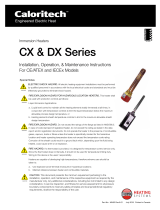 Caloritech CXCT110P111 Owner's manual
Caloritech CXCT110P111 Owner's manual
-
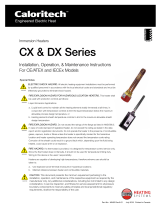 Caloritech CXC360P2583 Owner's manual
Caloritech CXC360P2583 Owner's manual
-
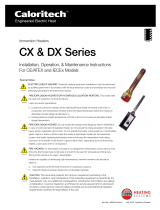 Caloritech CXC250P281 Owner's manual
Caloritech CXC250P281 Owner's manual
-
Thermon CXC, CXF, CXI Owner's manual
-
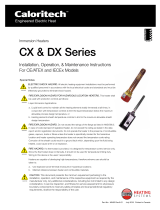 Caloritech CXCT150P131 Owner's manual
Caloritech CXCT150P131 Owner's manual
-
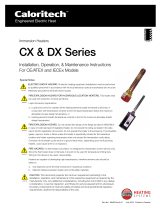 Caloritech CXCT120P131 Owner's manual
Caloritech CXCT120P131 Owner's manual
-
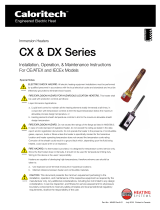 Caloritech CXCT110P1R11 Owner's manual
Caloritech CXCT110P1R11 Owner's manual
-
GGM Gastro PEKG20 User manual
-
GGM Gastro PDKG20S Owner's manual















